Aesthetic laser machines are valuable tools used in various medical and cosmetic procedures. To ensure the effectiveness and longevity of these devices, proper maintenance is essential. This article presents a comprehensive Medical Aesthetic Laser Maintenance checklist to help practitioners keep their equipment in optimal condition and deliver exceptional results.
Understanding the Importance of Aesthetic Laser Maintenance
Aesthetic lasers are intricate devices that require consistent maintenance to deliver accurate and safe treatments. Neglecting maintenance can result in reduced performance, shortened equipment lifespan, and potential harm to patients. Creating a well-structured maintenance routine is the key to ensuring the laser’s longevity and efficient functionality.
Creating a Maintenance Schedule
Establishing a detailed maintenance schedule is crucial for effectively managing the upkeep of your aesthetic laser. A clear schedule helps in organizing maintenance tasks, ensuring they are performed regularly without delay. It also aids in identifying any patterns of wear or issues that may arise over time.
Daily Maintenance Routine
- Cleaning the Machine’s Exterior Wipe down the laser system with a clean, damp cloth to remove dust and debris from the external surfaces. Avoid using abrasive cleaners that may damage the machine’s finish.
- Checking for Damage or Wear Inspect all visible parts of the laser for any signs of damage or wear. If you notice any issues, address them immediately to prevent further complications.
- Verifying the Cooling System Ensure that the cooling system is functioning correctly. Check the water levels, coolant quality, and monitor for any temperature irregularities.
- Calibrating Settings Regularly calibrate the laser settings to maintain consistent energy output and accurate treatment parameters.
Weekly Maintenance Tasks
- Cleaning and Inspecting Handpieces Thoroughly clean and inspect handpieces to ensure they are free from debris and in optimal working condition.
- Checking Power Output Use a power meter to verify that the laser’s power output aligns with the specified levels.
- Verifying Beam Alignment Perform beam alignment tests to ensure the laser beam is correctly focused and centered.
- Cleaning Optics and Lenses Clean the optics and lenses to avoid interference with the laser beam’s transmission.
- Examining Safety Features Test all safety features to confirm they are operational and capable of protecting both patients and operators.
Monthly Maintenance Procedures
- Replacing Consumables Regularly replace consumables, such as flashlamps and filters, to maintain optimal performance.
- Inspecting Water and Air Filters Check water and air filters for clogs or dirt buildup, and clean or replace them as necessary.
- Checking Water Levels and Quality Monitor the water levels and quality in the cooling system to prevent overheating and potential damage.
- Performing Software Updates Ensure that the laser’s software is up to date to benefit from the latest features and improvements.
Quarterly Maintenance Practices
- Verifying Energy Output Consistency Use a calibrated power meter to confirm the laser’s energy output consistency over time.
- Testing Electrical Safety Conduct electrical safety tests to ensure the system meets safety standards.
- Checking Circuit Boards and Connections Inspect circuit boards and connections for any signs of damage or loose connections.
- Inspecting Articulated Arms Verify the integrity and proper functioning of articulated arms, if applicable.
Biannual Maintenance Tasks
- Cleaning Internal Components Perform a thorough internal cleaning of the laser system, removing any accumulated dust or debris.
- Replacing Flashlamps and YAG Rods Replace flashlamps and YAG rods as part of preventive maintenance.
- Verifying Cooling System Efficiency Conduct efficiency tests on the cooling system to ensure it is operating at maximum capacity.
- Cleaning and Lubricating Moving Parts Clean and lubricate all moving parts to maintain smooth operation.
Annual Maintenance Procedures
- Replacing Capacitors and Batteries Replace capacitors and batteries to prevent unexpected malfunctions.
- Checking Power Supply and Voltage Test the power supply and voltage to ensure consistent and reliable operation.
- Inspecting Footswitches and Controls Examine footswitches and controls for proper functionality and responsiveness.
- Verifying Safety Interlocks Test safety interlocks to ensure they are functioning correctly to safeguard operators and patients.
Troubleshooting Common Issues
- Loss of Power Address potential causes of power loss, such as faulty connections or depleted consumables.
- Overheating Identify and resolve issues that may cause the laser to overheat, such as inadequate cooling.
- Inconsistent Beam Quality Troubleshoot beam quality problems, which may stem from misalignments or damaged optics.
- Error Messages Understand common error messages and their potential solutions to expedite troubleshooting.
- Handpiece Malfunctions Address handpiece malfunctions to ensure uninterrupted treatments.
Tips for Prolonging Laser Life
- Proper Handling and Storage Handle the laser system with care and store it in a clean, controlled environment when not in use.
- Controlled Environmental Conditions Operate the laser within recommended temperature and humidity ranges.
- Regularly Updating Training Stay up-to-date with the latest training and best practices for laser operation.
- Using Recommended Accessories Use only authorized accessories and parts to maintain warranty coverage and ensure compatibility.
Importance of Professional Servicing Like Laser Gulf
- Accredited Service Providers Rely on accredited service providers for repairs and maintenance to guarantee quality service.
- Warranty Considerations Follow the manufacturer’s warranty guidelines to avoid voiding coverage.
- Emergency Repairs Know the process for emergency repairs to minimize downtime in case of unexpected malfunctions.
Conclusion
Maintaining an aesthetic laser is a vital responsibility for any practitioner offering laser-based treatments. A well-maintained machine not only ensures optimal results for patients but also extends the laser’s lifespan, maximizing return on investment. By following the comprehensive Medical Aesthetic Laser Maintenance checklists outlined in this article, practitioners can provide safe, effective, and successful aesthetic laser treatments.


